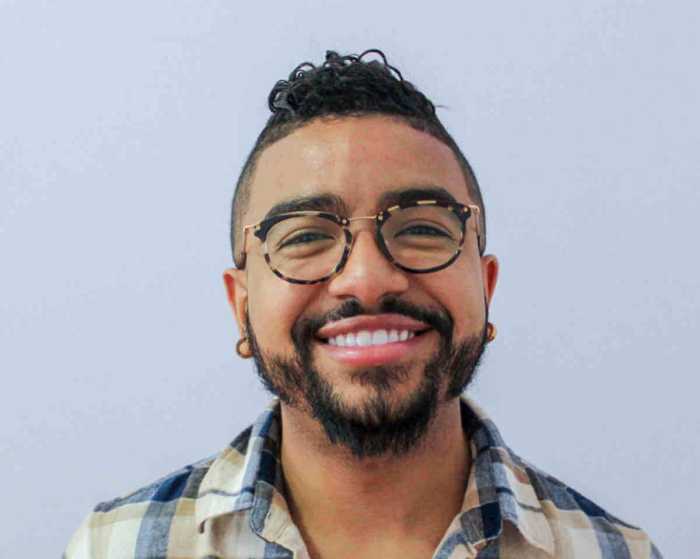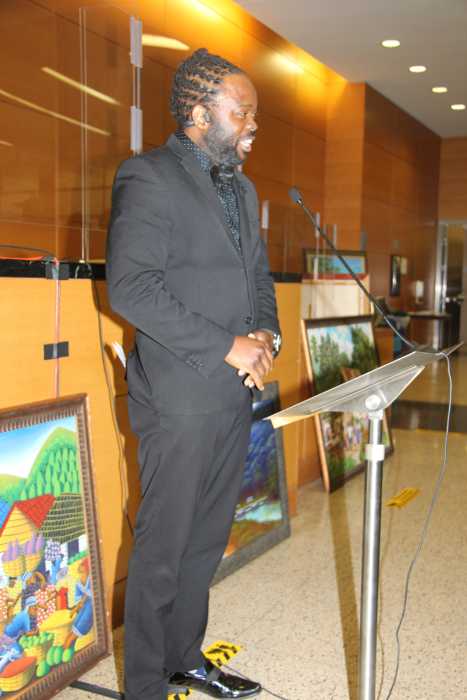Ending a protest at the State Capitol in Albany that extended across two days, AIDS activists, in a written statement, blasted Governor Andrew Cuomo for not adequately funding the Plan to End AIDS, an ambitious scheme that aims to reduce new HIV infections in New York from the current roughly 3,000 a year to 750 annually by 2020.
“We will not allow you to make a mockery of our fight to end AIDS by allowing you to get national headlines with your historic commitment to ending this epidemic, only to turn around and not follow through,” Jawanza Williams, a leader of VOCAL-NY, the group that organized the protest, said in a statement. “I read the newspapers, governor, I realize you have a history of big announcements followed by little action. That will not happen here.”
Roughly 30 members of VOCAL-NY seized a suite, dubbed the “war room,” near Cuomo’s office in the Capitol Building on March 28. Their plan was to hold the space for 24 hours while they read aloud the names of the 100,000 New Yorkers who were killed by AIDS since 1981. Late in the day, six activists were arrested by state troopers and the protest was suspended only to begin again the next morning.
As state budget hurtles toward April 1 completion, $70 million demanded for ending epidemic
Cuomo endorsed the plan in 2014, but added only $10 million to the state budget for the current fiscal year to fund the plan. Activists were hoping for more than $100 million. Late last year, anonymous Cuomo staffers said in press reports that Cuomo would propose $200 million in new funds for the plan for the fiscal year that begins on April 1, or at least the staffers created the impression that this was the proposal. When the budget was released on January 13, the plan was to spend $200 million a year over five years in $40 million tranches.
The plan was created by a 63-member task force that included every major AIDS group in the state and was co-chaired by Charles King, the chief executive of Housing Works, an AIDS group. A senior Cuomo administration official was the other co-chair. The groups had been unwilling to criticize Cuomo, but they became more forceful after January 13. The Cuomo administration responded by pointing to the dollars it already spends on healthcare for people with AIDS.
“No one is more committed to ending HIV/ AIDS than Governor Cuomo, who with a $2.5 billion annual investment, has made New York State a national leader by pledging to end the epidemic by 2020 and providing quality support services to those impacted by the disease,” the administration said in a statement. “The budget — which is a negotiated document between the legislature and the executive — is not due until April 1, which every advocate should be aware of.”
Pointing to mandated Medicaid spending, as the Cuomo administration did, has been a standard tactic used by mayors, governors, and presidents to refute charges that they are not spending enough to address the epidemic. Activists say that the plan, which will use anti-HIV drugs in HIV-positive and HIV-negative people to substantially reduce new HIV infections, requires new cash.
AIDS groups sought $70 million in new dollars for the coming state fiscal year. Of that amount, $20 million would fund prevention programs at the AIDS Institute, a unit of the state health department, and $50 million would be the state’s share of the cost to expand housing, nutrition, transportation, and other services for people with HIV. Some science supports the assertion that stable housing and other services make it easier for HIV-positive people to stay on their medication and unable to infect others.
Mayor Bill de Blasio has also endorsed the plan, but made expanding services at the HIV/ AIDS Services Administration (HASA), a unit of the city’s Human Resources Administration, contingent on the state kicking in half the cost. HASA supplies housing and other services.
Currently, HASA only accepts clients with an AIDS diagnosis, which is an advanced stage of HIV infection that anti-HIV drugs have made increasingly rare. Expanding services there to include all HIV-positive people would cost $66 million in the first year and $90 million a year for five years after that. Out of the $70 million ask, $33 million of the $50 million would pay for HASA expansion and $17 million would fund similar services upstate. More than 90 percent of the new HIV infections in New York are in New York City. The state is balking at funding what is seen as a new entitlement.
Prior to the VOCAL-NY protest, AIDS groups held a press conference on the steps of City Hall where they called on Cuomo to spend the $70 million.
“This was the governor’s initiative and the governor needs to step up,” King said at the March 21 press conference. Housing Works is known for its aggressive advocacy on behalf of people with HIV.
ACT UP, the AIDS activist group, protested Cuomo when he marched in the St. Patrick’s Day Parade on Fifth Avenue. ACT UP was also on the task force that wrote the plan.





































